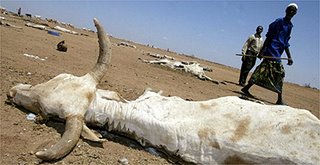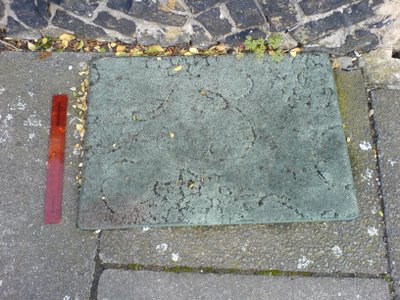Clean Water Is A Human Right
Clean Water Is A Human Right
Clean water is a human right
Kevin Watkins / International Herald Tribune
Published: November 10, 2006
NAIROBI: Vivian Neyamba, aged six months, just became another grim statistic in the world's most lethal and least reported humanitarian disaster. She lost her life not to a drought, a flood or a violent conflict, but to a killer that claims the lives of 500 children across the world each day - diarrhea caused by a global crisis in water and sanitation.
I have been following these issues for years. But standing outside the tiny corrugated iron shack in the sprawling slum of Kibera in Nairobi, where Vivian Neyamba lived her short life, I got a heartbreaking glimpse into what it actually means to live without clean water and basic sanitation.
In a slum of more than half a million people, the largest informal settlement in Africa, almost no one has a tap in their home. At dawn, armies of women and young girls line up with buckets to buy water at roadside standpipes from private vendors. On a bad day, they have to wait more than an hour, or go without.
You can smell the sanitation crisis in the air. Kibera is a toilet-free zone. Lacking any alternative, people defecate into plastic bags which are thrown into ditches. Raw sewage is everywhere. It is in the noxious black liquid that floods through people's homes when it rains, in the refuse heaps that children play in, and in the dusty lanes that pass for streets.
It is also in the water that people drink. Fractured pipes carrying water from the mains to the standpipes suck in raw sewage. "That is why our children get sick," says Margaret Olewoch, a birth attendant who has lived in Kibera for 20 years, pointing to a leaking pipe. "The water here is dangerous."
Not everyone in southern Nairobi faces a daily water crisis. Cross Ngang Road, which marks the northern perimeter of the slum, and you enter a different water world. Here the water sprinklers of the Royal Nairobi Golf Club work overtime to keep the greens in a condition to which the city's business elite and diplomatic corps are accustomed.
Back on the other side of Ngang Road, water kills children. Typhoid and dysentery are rampant, with child death rates running at almost four times the average for Nairobi. The slums of Kibera are a microcosm of one of the greatest development challenges of the 21st century. More than a billion people today lack clean water. About 2.6 billion - half of the developing world's population - lack access to sanitation.
These twin deficits inflict enormous human, social and economic costs. Unclean water is the second biggest killer of children, claiming more than two million lives annually. Diseases caused by water keep countless millions more children out of school, reinforce poverty, and act as a brake on economic growth. They cost African countries about 5 percent of their gross domestic product - equivalent to what the region receives in aid. Under the Millennium Development Goals, governments have pledged to halve by 2015 the proportion of people without access to water and sanitation. But at the rate we are going, this crucial goal will be missed.
The governance of water markets is at the heart of the problem. All too often, the poorer you are, the more you pay. Municipal water utilities provide cheap water, usually heavily subsidized, to industry and high-income suburbs, while people living in slums rely on a complex web of intermediaries such as tanker-truck operators and water vendors.
You can see the results in Nairobi. People living in the slums of Kibera pay five times more for their water than the Royal Nairobi Golf Club. In fact, they pay more per liter than people living in New York or London. From Manila, to Mumbai and Jamaica, the same story applies in slums across the world. So what can be done to tackle the global crisis in water and sanitation?
Continued at the link above.
~~~~~~
The Human Right To Water
Very comprehensive report from seven years ago that is still relevant today.
My comments:
Access to resources that sustain life and maintain health are a human right under international law. Water is a resource that sustains life from the time of being a fetus in the womb. Without water there would be no food to sustain us, nor to provide us with safe and adequate sanitation facilities that guard against diseases that cause illness and death.
I believe for any community or country to deny such a right to its people is a human rights abuse that should be punishable under that law. Of course however, there are groups that do not wish for water to be declared a universal human right. Those governments that use water as a political weapon or as a way to divert it to richer areas are only two groups of people as well as corporations that would be prone to oversight and fines for violating the human rights of indigenous people on the lands they take water from to make a profit.
They will claim water should not be declared a human right as to avert wars, but in essence it is the quality, lack of and scarcity of water resulting from higher prices, lower quality, lack of moral will in bringing sensible water management and education to underdeveloped countries, diversion, privitization, dams, and environmental policies that cause drought and deforestation that actually lead to the wars. People can and have always come to agreements among themselves. It is only when governments and other entities with ulterior motives get in between for their own benefit that you see problems begin.
World Water Forum Did Not Declare Clean Water To Be A Human Right
Look to the WORLD BANK to also see why this declaration will not happen. The World Bank actually pushes for privitization of water behind their compassionate facade.
World Bank And WTO/ Corporate Control Of Water/Dr. Vandana Shiva
There are thousands of Vivian Neyambas in this world, and they all die early senseless deaths that could be prevented if their fellow humans had the slightest bit of morality above the insensitivity and ignorance that prevails in a world gone mad with greed. What price do you place on a human life?








